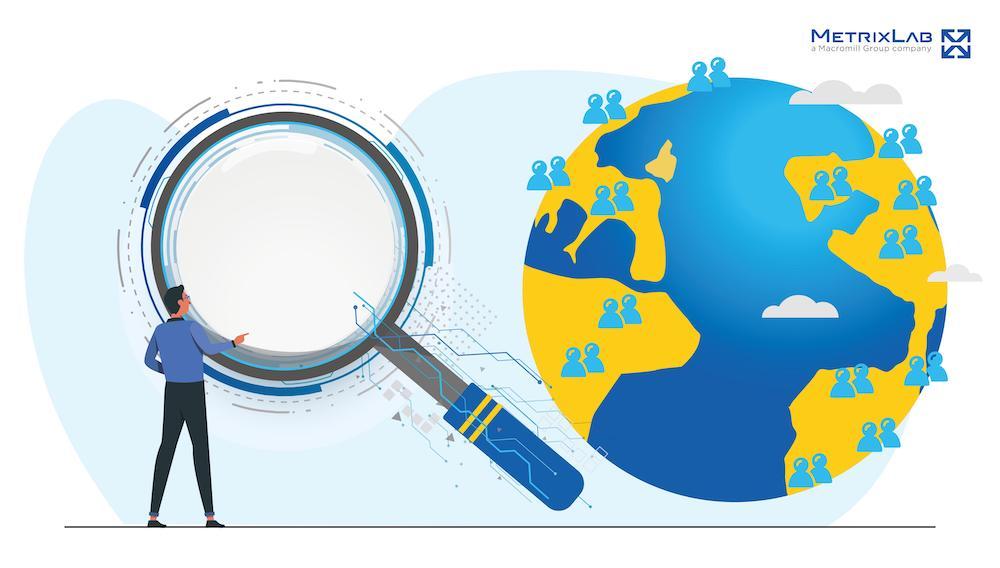
Technology is changing the research game – but not the players
share on
This post is sponsored by MetrixLab.
It is no secret the research industry has been evolving over the past few years because of technology shifts. Using artificial intelligence to predict results, online simulation of testing spaces, more access to mobile consumers, and big data modelling are just a few things that have been changing how we do research.
While the changes may have been gradual, the shift in mindset has been tectonic. Zero-based budgeting and a demand for faster turnaround times to meet business needs are pushing these digital developments even further into the spotlight.
In the past year, COVID-19 has been another catalyst that has fast forwarded these conversations into spaces that were previously uncomfortable for most companies.
This had an immediate domino effect on the research industry as a whole – in both agencies and insight teams. If you weren’t fast enough or far enough along in your adoption of digital – by moving more of your research operations online or by meeting the demands of a fast-changing insights landscape – this was an opportunity to catch up fast.
Do these shifts completely change the traditional ways of doing research?
This shift has created a divide in how we think about traditional versus the modern ways of doing research. Online access to consumers has exponentially grown in Asian markets over the past few years. This has allowed us to conduct large research projects completely online leading to budget and time efficiencies for clients and research agencies.
It has also resulted in better engagement with respondents. With a little creativity and out-of-the-box thinking, we have simulated retail spaces such as duty-free or mom-and-pop stores to understand areas where research has previously been difficult to conduct. But it hasn’t taken away the most important element of so-called traditional research – the human touch.
Technology is a great enabler. It helps amplify what is already there in terms of human creativity and expertise, from using algorithms to coding ad content to simplifying and decoding consumer responses. This has elevated how we researchers conduct and analyse data, but it has not replaced the importance of the researcher themselves.
The key to successfully harnessing technology to adapt to changes in the digitising research industry is to integrate tools that blend research innovation with human intelligence – tools that can leverage technology to build speed and agility into the process, but which leave room for the researcher.
Two examples of technology and human collaboration in research
The goal of traditional qualitative studies is to bring together underlying insights from consumer experiences, culture and opinions. Innovative solutions such as digital qualitative platforms or discussion boards allow us to leverage digital capabilities that run on AI to collect and analyse real-time data from large groups. But the key is to maintain the spirit of a traditional qualitative study.
Interactive platforms allow consumers to share their product or brand experience with us in creative ways using videos and photos. Tools such as this provide a workaround for time constraints, cross-country access and travel restrictions: Imagine a Vietnamese moderator running a qualitative group session from Singapore among 50 Vietnamese respondents, while the client in Japan is viewing in real-time.
At the end of the day, technology plays a critical role without taking away the importance of human expertise, cultural nuances and teamwork, as AI helps assimilate and translate information into capable researchers’ hands.
Let’s look at another example from AI-powered creative testing. Many tools exist now that boast results of analysed ads in hours or even minutes. But algorithms alone cannot detect cultural nuances or humour, for example.
Human researchers are still the most important part of the puzzle. The AI algorithm that we use in our own creative testing solution is a game-changer in that it can predict results based on hundreds of elements which it codes for every tenth of a second in each ad. However, the actionability of the results comes from the story that this data tells – and that’s again where the human touch comes in.

Embrace the change or fall behind
Qualitative or quantitative – a good understanding of a client’s needs and the research objective is at the heart of any analysis.
While the pandemic has forced people to stay physically apart, the situation made us realise that technology can remove barriers to meeting consumers, and by extension, remove barriers to meeting the needs of our clients.
Whether creating digital spaces to conduct research or providing more agile solutions to keep up with a rapidly changing consumer landscape, the end result is we’re getting closer to a client’s needs – faster and better than ever.
Technology has removed space and time as obstacles to accessing data or consumers, but the need to understand what’s behind the data – behavioural change and the underlying personal or cultural motivations – is more important than ever.
The secret to success moving forward is not to reinvent the wheel with an over-reliance on technological innovations, but to see them as enhancements of what we’re already doing well.
share on
Free newsletter
Get the daily lowdown on Asia's top marketing stories.
We break down the big and messy topics of the day so you're updated on the most important developments in Asia's marketing development – for free.
subscribe now open in new window
